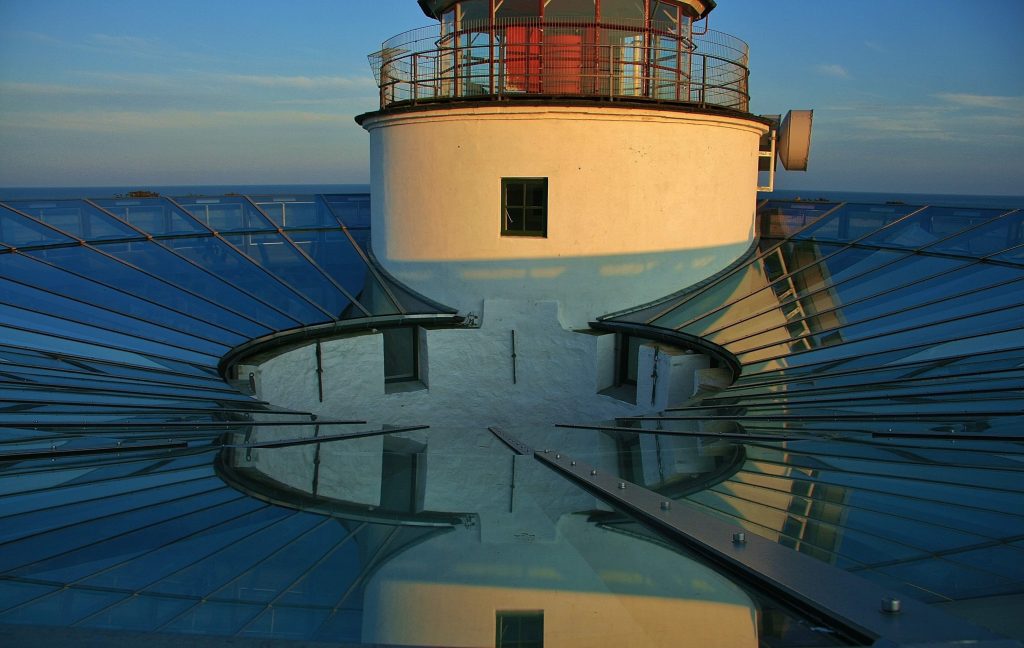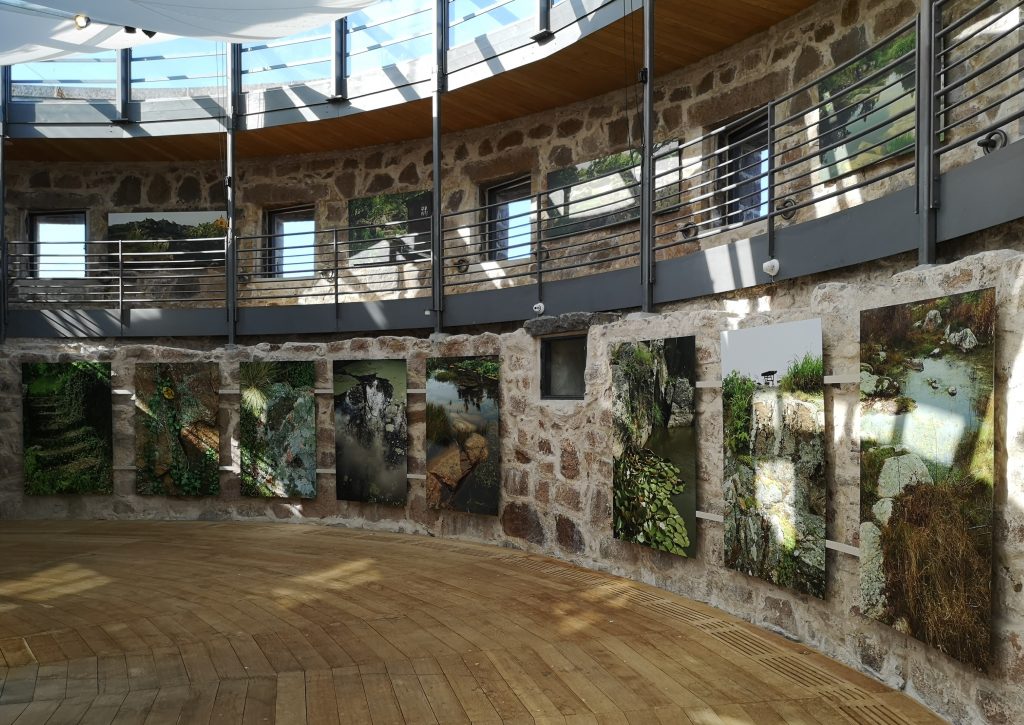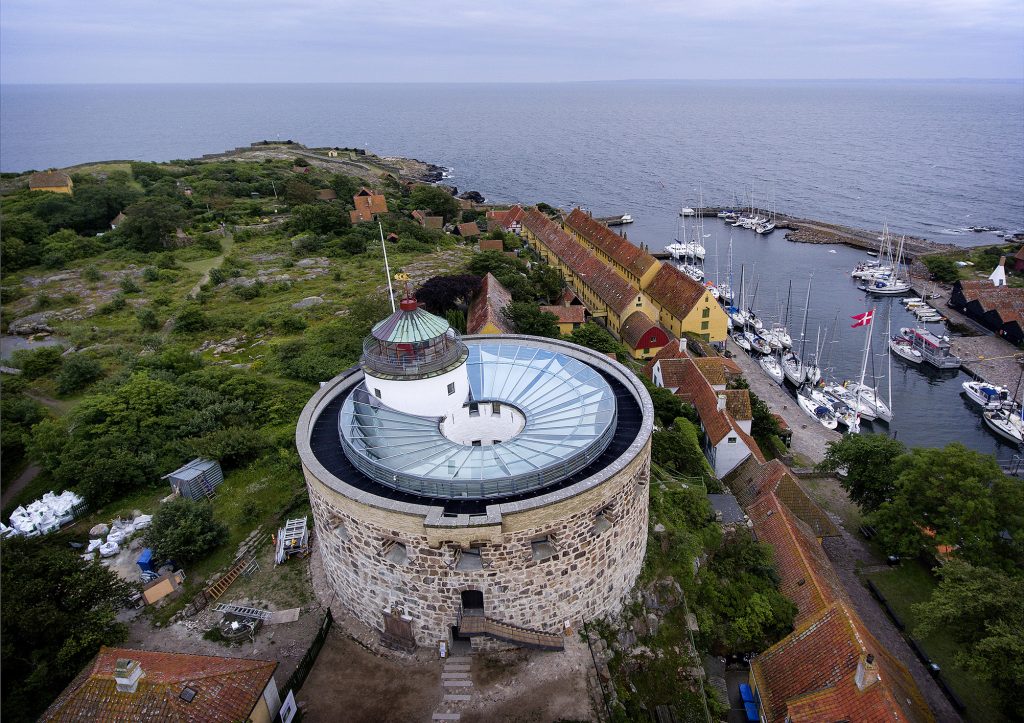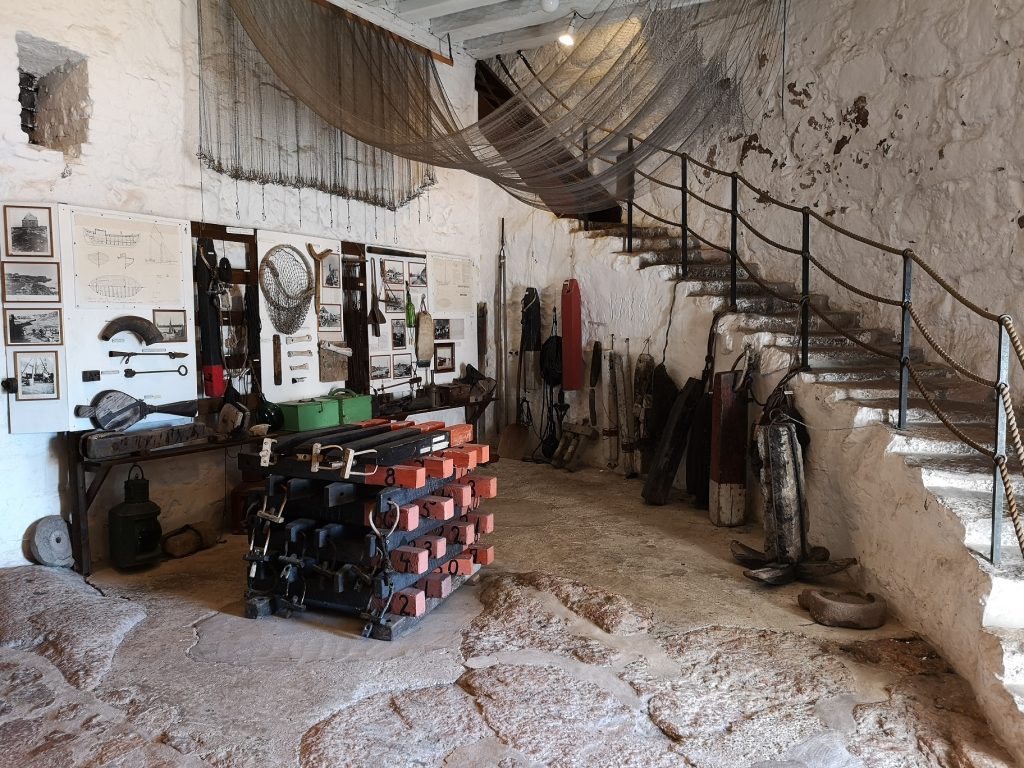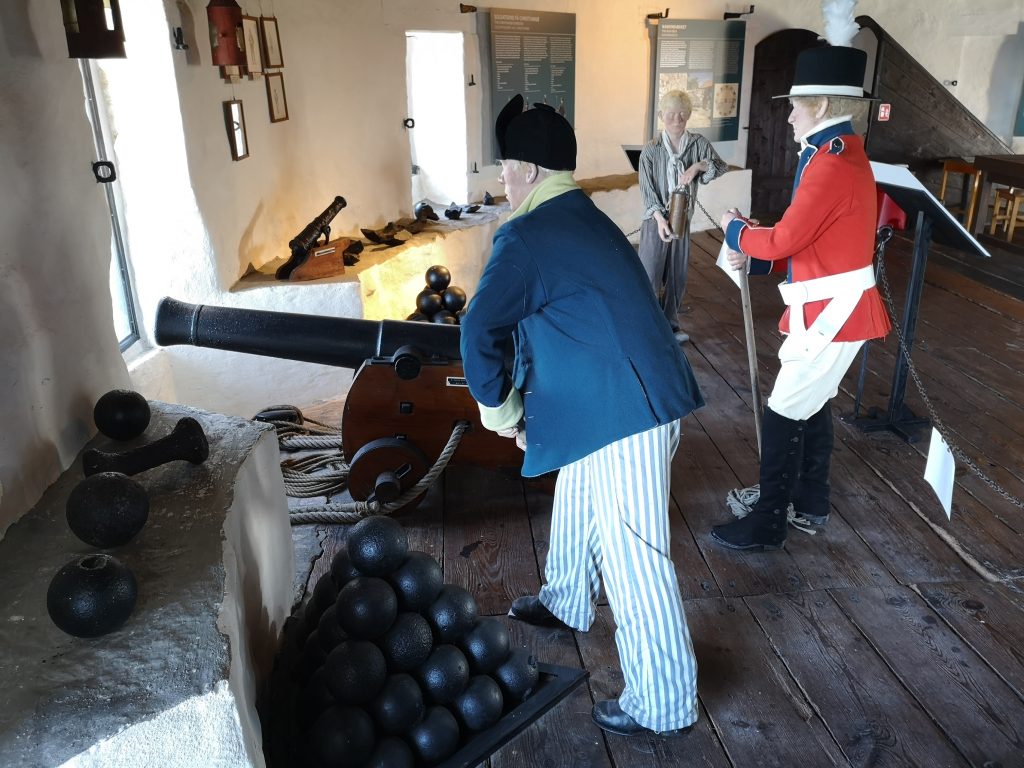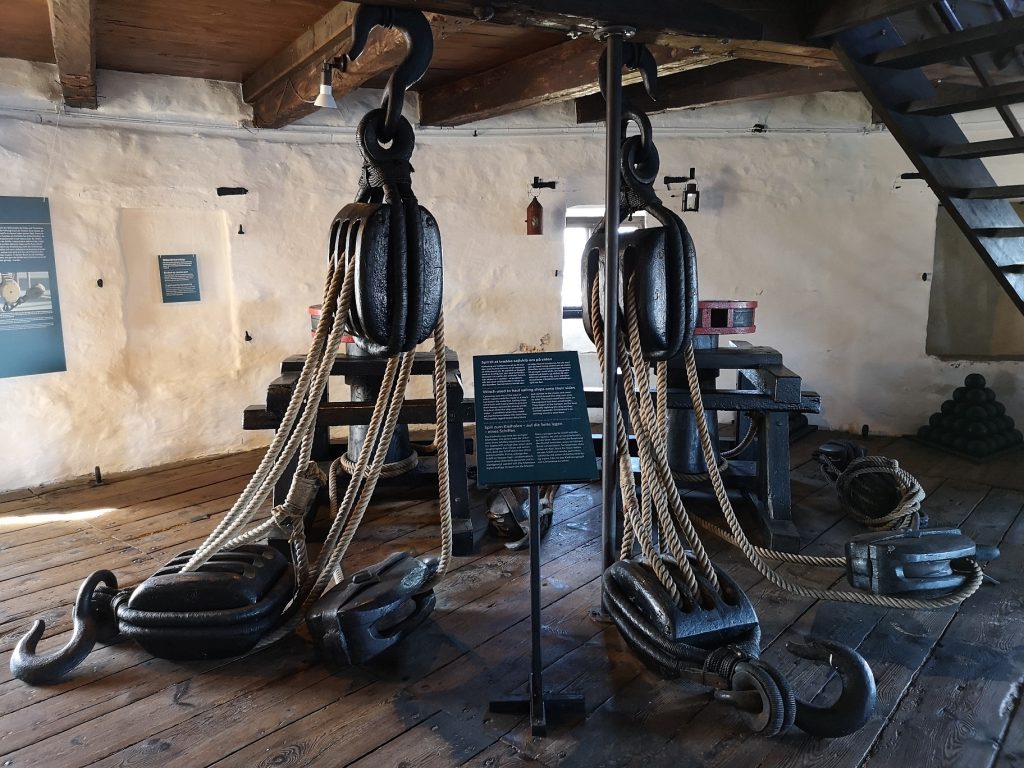Store Tårn – Big Tower
Ertholmene’s distinctive landmark towers – Store Tårn on Christiansø and Lille Tårn on Frederiksø – were originally built as the fortress’ central defence structures. Today, they both house museums.
Store Tårn, with the built-in lighthouse from 1800, was fully renovated in 2014–2018. The tower has been covered with a spectacular and beautiful glass roof, creating a unique architectural space as the setting for permanent exhibitions on local history and nature, as well as changing art exhibitions and installations. The beautiful digital animation of the British attack on Christiansø in 1808 is particularly popular, among children and adults alike. And don’t miss the incredible 360° view of the entire archipelago from the exterior walkway at the top of Store Tårn.
To learn more about the renovation of Store Tårn, visit Realdania (in Danish)

Lille Tårn – Little Tower
Lille Tårn looks just like it did back when the fortress was active, only now it is home to a rustic museum with exhibitions on local military and cultural history. The museum is worth a visit, if for no other reason than to see the beautiful model of the naval fortress from 1850 on the top deck.

Visit both towers for the full Christiansø experience.
The decline and renovation of Store Tårn
Store Tårn is a special building of cultural-historical significance. Together with the smaller Lille Tårn on Frederiksø, it defended the entrance of the naval fortress’ natural harbour. Like Lille Tårn and the rest of the fortress, the granite-stone Store Tårn is a protected historical site.

In 1800, the lighthouse was built between the two ring walls, and the original tiled roof was replaced by a domed roof of sheet iron. The tower withstood the bombardment by the British in 1808. In the 1840s, the height of the outer ring wall was raised, eliminating in the process a recessed watchman’s gallery. At the same time, the tower was given a new flat copper-clad deck as a roof down behind the top yellow brick cornice.
The fortress was decommissioned in 1855 and fell into disrepair. The military command was finally abolished in 1863.
In 1879, the tower was in such poor condition that the rotting decks and the flat roof were removed. Store Tårn went unprotected, with no roof, for a long time, and the rough Baltic Sea weather contributed to the gradual deterioration of the tower.
Preservation through development
For years, there were many attempts to restore Store Tårn. Multiple sketches and projects bear witness to the many initiatives. In 2009, a new project proposal was developed by architect Mette Maegaard Nielsen with the help of Realdania, a for-profit charitable organisation with focus on the built environment. This project formed the basis for Realdania’s announcement on 14 January 2014 that full funding had been procured for an extensive renovation of Store Tårn. The keywords for the restoration project were: Preservation through development.
A total of DKK 30 million was earmarked the restoration, with DKK 15 million financed by Realdania, DKK 2 million by The Augustinus Foundation and DKK 13 million by the Danish Ministry of Defence. The restoration was expected to be completed in 2019 and to stay within budget.
Structural components
The tower originally comprised an open space and a covered space. The tower’s central courtyard has been retained as an outdoor area, while the space between the inner and outer ring walls has been covered with a glass roof slanting down towards the inner ring wall. The glass roof is not visible from the outside.
An additional one-storey deck has been added to the covered space, creating:
- A walkway for the public on the 3rd floor of the gun ports
- A footbridge to the lighthouse
- Stairs connecting everything
- The lighthouse is incorporated with its own spaces
Materials – design

The new building elements stand out, compact and simple, as distinct shapes against the old, raw and rough walls which stand out as distinct shapes against the rocks. Preserving the rawness, the ruggedness, was important. Without overshadowing, the new layers protect the tower and tell its story with a simple, beautiful and minimalist idiom. The use of new materials was kept to a bare minimum: cast concrete, wood, dark steel and glass.
Sustainability
Sustainability has also been incorporated as a key parameter in the project plan. Consequently, the new additions are not tailored to specific purposes, but are designed to be adaptable to multiple functions. Everything is: ROBUST – DURABLE – SIMPLE.

